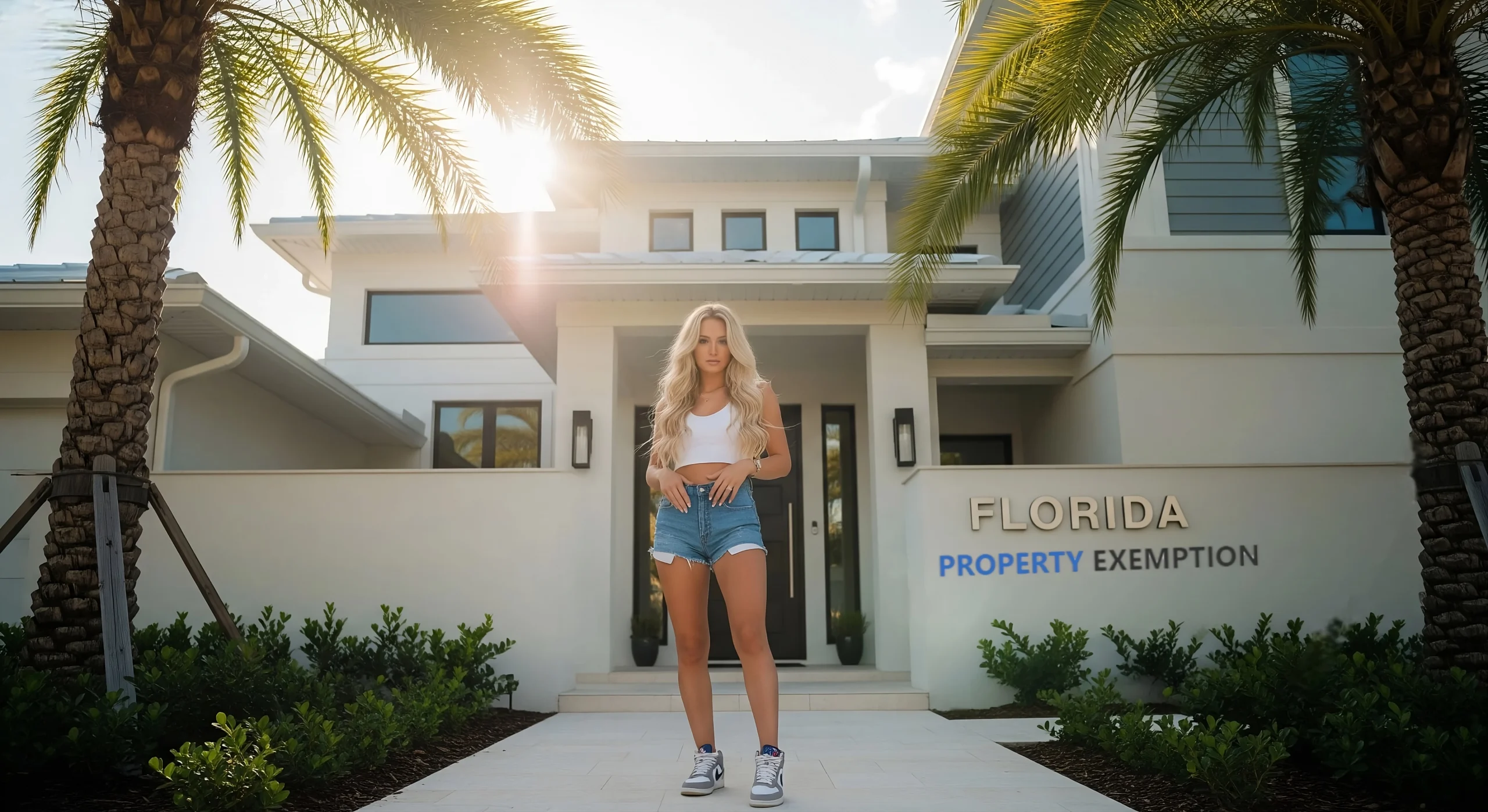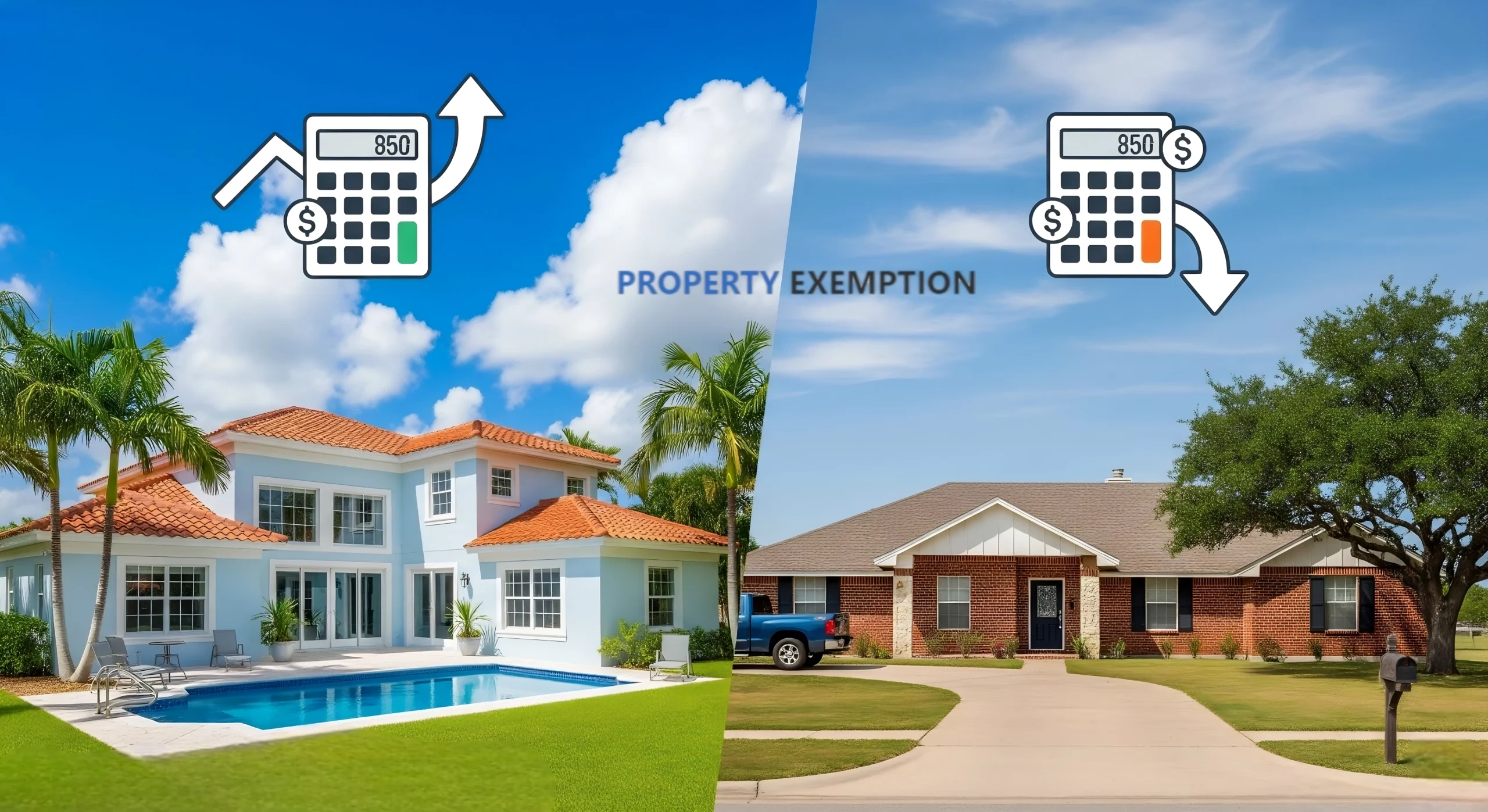Thinking about trading beaches for brisket and moving from Florida to Dallas? You are in good company. Plenty of families make the jump for jobs, schools, and the no‑income‑tax combo both states offer. Before you pack the truck, it pays to get clear on how each state treats your primary residence.
Florida and Texas both deliver strong homestead perks that lower your property tax bill and shield your home from most creditors, but the rules work a little differently in each place. Understanding those differences can help you plan your budget and avoid paperwork headaches.
What Florida Offers: The Homestead Exemption You’re Leaving Behind

Florida’s homestead package does two big things: it cuts your taxable value and limits how fast that value can climb.
- Exemption amount
The homestead exemption in Florida provides significant benefits that have likely been reducing your property tax bill for years, and for 2025, it can reduce taxable value by up to $50,722. The first $25,000 applies to all taxing authorities, including schools. The additional $25,722 applies only to non‑school taxes on the portion of assessed value between $50,000 and $75,722. Florida voters approved an annual inflation adjustment to that second slice beginning with 2025, which is why you see the $50,722 total this year. - Save Our Homes assessment cap
Once you have the exemption, Florida’s Save Our Homes rule caps yearly increases in assessed value at the lesser of 3% or CPI, which helps keep long‑term property taxes in check when market values jump. You can also transfer up to $500,000 of your accumulated Save Our Homes benefit to a new Florida homestead if you move within the state and meet the timing rules. - Creditor protection
Florida’s constitution protects unlimited home value from most creditors, subject to acreage limits: up to one‑half acre inside a municipality and 160 acres outside city limits. There are standard exceptions for things like your mortgage, property taxes, and contractor liens.
If you have owned in Florida for years, that 3% cap likely created real savings over time. Just remember, portability only helps when you move within Florida, not when you move to Dallas.
What Texas Brings to the Table: Your New Benefits in Dallas

Texas structures relief differently, and many newcomers feel the savings quickly.
- Exemption amount
Every homeowner with a qualified residence homestead gets a $100,000 school district exemption off the top. Cities, counties, and special districts can also adopt local‑option exemptions (up to 20% of value, at least $5,000), which stack on top if offered where you live. Dallas County and local taxing units set these locally, so amounts vary by address. - Assessment cap
Texas limits the appraised value increase on a residence homestead to 10% per year plus the value of new improvements, once your homestead is in place. This is less restrictive than Florida’s 3% cap, but it still prevents large, single‑year spikes from driving your tax bill. - Senior or disabled homeowner relief
Starting the year you turn 65 or if you qualify as disabled, your school district taxes are “capped” at the amount you paid that first qualifying year, subject to adjustments that state law outlines. Many taxing units also offer extra exemptions for seniors and disabled homeowners. - Creditor protection and size limits
Like Florida, Texas protects a homestead from most creditors. The protection is tied to land area rather than value: up to 10 acres in an urban area and up to 100 acres for a single adult or 200 acres for a family in rural areas. Mortgage, tax, and mechanic’s lien obligations remain exceptions.
Note
As of October 16, 2025, the statewide school‑tax homestead exemption is $100,000. Texas voters will decide in November 2025 whether to increase it to $140,000 (Proposition 13). Keep an eye on that ballot measure if you are closing late in the year.
The Key Differences That Matter

These two systems are generous, but they reward homeowners in different ways.
- Assessment caps over time
Florida’s 3% Save Our Homes cap is tighter than Texas’s 10% cap. If you plan to stay put for a long time, Florida’s cap tends to protect long‑run affordability more strongly as markets appreciate. Texas still caps increases, but the ceiling allows faster catch‑ups to market value. - Upfront savings versus long‑term savings
Texas generally provides larger immediate tax relief through its $100,000 school exemption and any local options. Florida’s relief grows the longer you stay because of the Save Our Homes cap and, if you stay in Florida, portability when you move to another Florida homestead. Texas does not have portability, so each home you buy is reassessed and capped from that new baseline. - Creditor protection mechanics
Both states protect your homestead from most creditors. Florida ties protection to unlimited value with acreage limits. Texas ties protection to acreage with no value limit. Either way, standard exceptions for mortgages, taxes, and authorized liens still apply.
Making the Move: What You Need to Know

When you establish your Dallas home as your residence homestead, timing and documents matter.
- Establish residency the Texas way
On Texas’s homestead application, the address on your Texas driver’s license or state ID must match the property address. Plan to update your ID quickly after closing. Some appraisal districts may also ask for a vehicle registration receipt or a utility bill that matches the homestead address. - Know your filing window
File your homestead application with the Dallas Central Appraisal District (DCAD) by April 30 for that year’s tax savings. If you miss it, Texas allows late filing in many cases for up to two years after the delinquency date, which is typically February 1 of the following year. Also, Texas law now lets many buyers file in the same year they purchase. - Cancel Florida’s homestead
Once you establish Texas as your permanent home, notify your former Florida county property appraiser to remove the Florida homestead. Claiming homestead in two states is illegal and can trigger penalties. Florida homestead applications and changes are handled at the county level and follow state deadlines.
A quick checklist for your first month in Texas:
- Update your Texas driver’s license with your Dallas address.
- File the homestead application with DCAD.
- If you are 65 or older or disabled, apply for those additional exemptions and confirm your school tax ceiling.
The Bottom Line
Florida and Texas both treat homeowners well. Texas tends to deliver bigger day‑one exemptions, which many movers notice immediately. Florida excels at long‑term assessment limits that compound over time if you stay put. Your actual bill will still depend on your home’s value and local tax rates, but the net result is that many families find Dallas’s overall cost of living and job market compelling even after comparing homestead rules.
If you are heading to Dallas, set a reminder for the April 30 homestead deadline, get your ID address updated, and file early. A little upfront organization makes sure you capture the Texas savings you are entitled to in your new home.